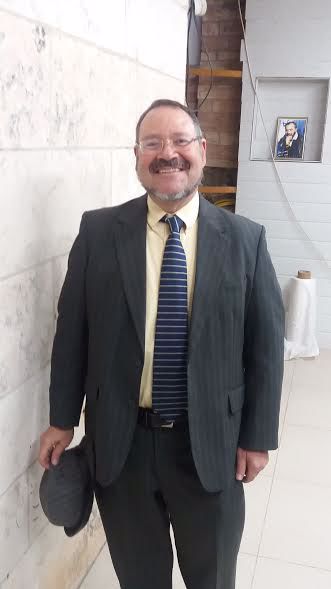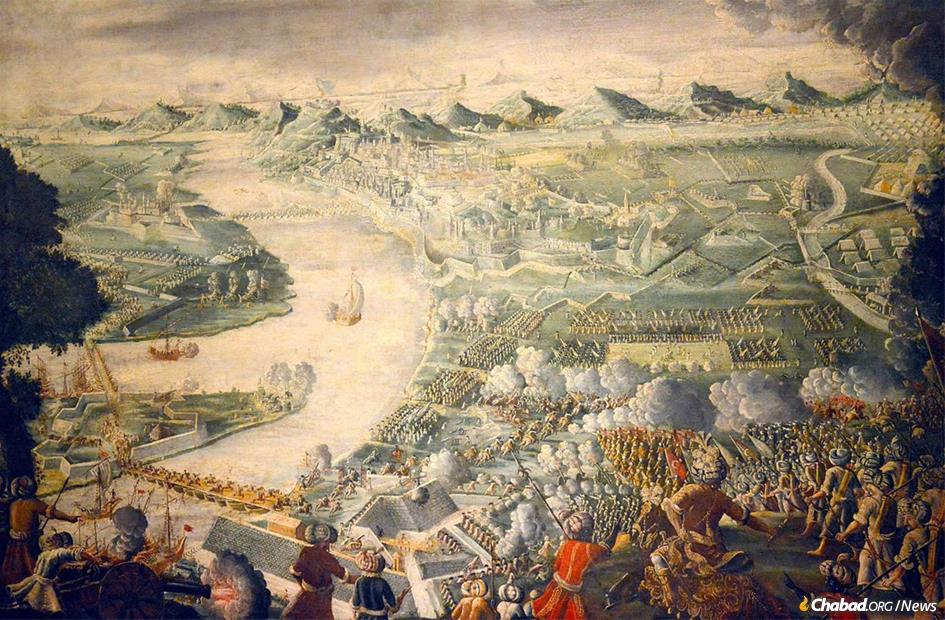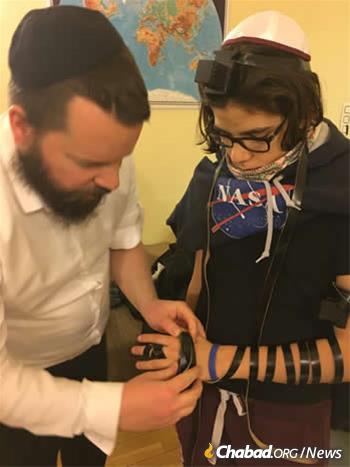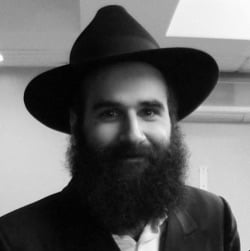In the summer of 1686, the Jewish community in Budavár (the ancient nucleus of modern Budapest) was laid to waste by victorious Christian fighters, who had laid a lengthy siege on the city, which had previously been held by Turkish Muslims.
Many of the city's Jewish denizens were raped, murdered or sold into slavery, and their three synagogues burnt.
One of those synagogues, situated near the "Jewish gate" of the walled city frequented by Syrian Jews, was discovered in 1964 and made into a museum. Known informally as the Buda Castle Synagogue, it is believed to have been built in the 13th century.
In 2018, the EMIH (the umbrella organization associated with Chabad Lubavics of Hungary) was invited to revitalize the building and make it into a thriving center of Jewish life once again.
This past Shabbat, the Buda Castle synagogue was the site of a joyous bar mitzvah, the first to be celebrated there in 332 years. The young celebrant, Yonatan Sebok, is a student of Rabbi Asher Faith, the Hungarian-born rabbi who leads the now-flourishing congregation.
Yonatan Sebok, above, was the first boy to celebrate his bar mitzvah in Buda Castle Synagogue since 1686. Here, he puts on tefillin with Rabbi Asher Faith.
Rabbi's Journey Mirrors Community's Resurgence
The congregation has been gaining attendees every week, reports Faith, drawing local Hungarian-speaking Jews, Israeli expats and even an Australian Jew who has taken to its charming vibe.
In a sense, the congregation's rise from the abyss reflects the rabbi's journey. Raised in Budapest in the 1990s and vaguely aware that he was Jewish, he had no interest in religion and planned to become a journalist. Even after his older sister and twin brother became more involved in Judaism and attended Chabad events and services, he demurred.
After he finished high school, he decided to check out the Friday-night meals that had so captivated his siblings. "I came for the food and to be entertained by the 'crazy' American yeshivah students who danced with such joy, but it had nothing to do with me," he told Chabad.org.
His turning point came when Rabbi Slomó Köves (also a red-bearded Hungarian-born Chabad rabbi) invited him to attend Pesti Jesiva, the Chabad rabbinical school Rabbi Boruch Oberlander had founded in the Szász Chevra synagogue on the Pest side of the city (Budapest was formed by the merger of Buda and Pest, divided by the Danube River, in 1873).
"I came for a day and stayed for two years," says Faith jovially in a lilting Hebrew laced with a strong Hungarian accent.
Hungry to learn more, he continued his studies in Israel, where he remained for nearly six years. "I had a very hard time at first," he acknowledges, noting that he knew no Hebrew, which was the language of instruction, "but I stuck with it and eventually persevered."
In 2010, now married to his French-born wife, Racheli, the young rabbi returned to the city of his youth and joined the team of Chabad-Lubavitch emissaries led by Rabbi Boruch and Batsheva Oberlander, who founded Chabad in Hungary in 1989.
"Rabbi Faith has gained a following among the youth of the city," says Rabbi Oberlander, who also serves as the head of the city's Orthodox rabbinical court. "He's learned, he's kind, he's approachable, and people flock to him and his wife."
Alongside young people, his presence is felt in other segments of the Budapest Jewish community, which numbers as many as 100,000-strong. He gives classes in nursing homes, visits local prisons and organizes an afternoon yeshivah.
The ancient synagogue joins four other synagogues run by Chabad in the Pest side of the Danube is the second to be reopened by Chabad in Buda side. The stately Óbuda Synagogue was been built in 1820 and became a television studio in the 1970s. In 2010, under the leadership of Köves, it was returned to its original sacred purpose.
Faith greets dignitaries who came to celebrate his installation as rabbi of the ancient synagogue.
Another Celebratory 'First' in the Works
When news spread of the impending return of the Castle Synagogue, members of the Óbuda congregation sponsored a new Torah scroll to grace its newly constructed ark.
Held in September, the official reopening of the synagogue and installation of Faith as its spiritual leader was attended by Hungarian President János Áder and Chief Rabbi of Holland and Representative of the Rabbinical Centre of Europe Rabbi Binyomin Jacobs.
As the hundreds of guests stood reverently, accompanied by a lone violinist, Köves and Faith sang Szól a Kakas Már, the haunting Chassidic melody that has become the unofficial anthem of Hungarian Jewry.
Composed by the beloved Rebbe of Kalev (Nagykálló), the song couches the Jewish people's yearning for Moshiach in the allegory of a peasant wishing to be reunited with a beautiful bird of the most exquisite colors.
The rabbi didn't have to wait long before people began attending the synagogue.
Faith flanked by young Hungarian Jews, many of whom attend his classes or other events.
Rosh Hashanah saw every seat filled and many more crowding the vestibule, eager to partake in the spiritually uplifting services.
Every Shabbat begins with an hour-long class on another Jewish topic, and every service is preceded by a five-minute talk that sets the stage for a meaningful prayer experience.
Despite being the oldest functioning synagogue in Hungary, the events under its arched stone ceiling are fresh, relevant and attractive.
A kosher whiskey-tasting included a presentation by a connoisseur and a talk from the rabbi on the challenges of producing kosher spirits. On 15 Shevat, the New Year for Trees, the rabbi addressed the significance of the day, and a chef prepared sangria and other fruit creations. An upcoming soirée will feature a sushi chef and a class on producing and purchasing kosher sushi.
Looking ahead, the rabbi concedes that lack of space is an issue he'll need to contend with in the coming months. But he is excited about what the future will bring. Following the confetti and celebratory activities of the bar mitzvah, the synagogue now prepares for another milestone: its first Jewish wedding since the Ottoman era.
The small, albeit historic, synagogue is once again open for weekly prayers.
Rabbi Köves leads the procession as Rabbi Faith carries in the new Torah scroll, flanked by Rabbis Oberlander and Jacobs.
The ceiling features several Kabbalistic drawings painted during the Ottoman era.
This stone was part of another ancient synagogue that had been discovered below the modern-day Buda Castle.


 Sunday, 17 March 10:24 AM
Sunday, 17 March 10:24 AM 













No comments:
Post a Comment